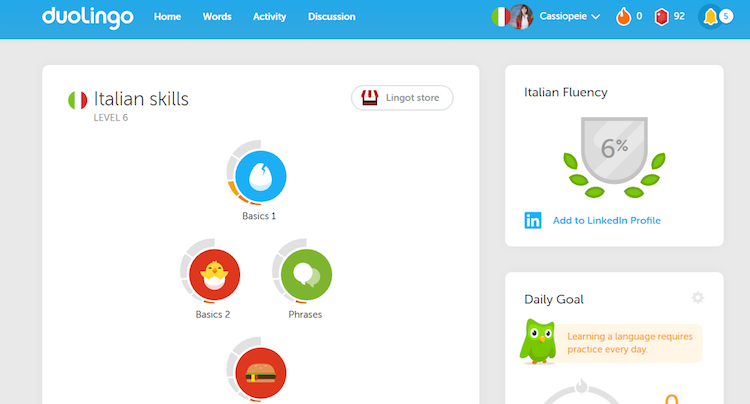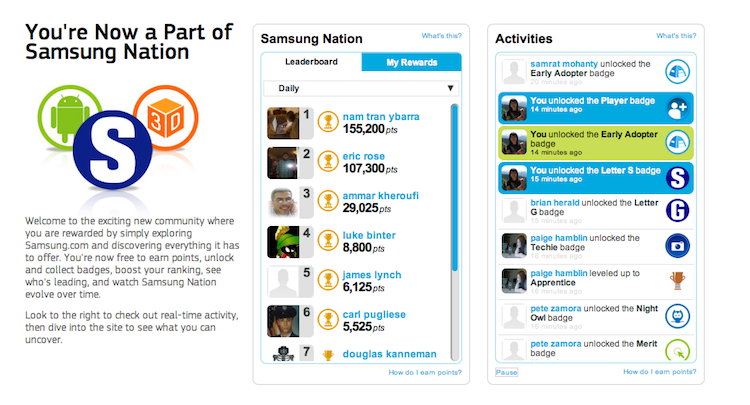Gamification is no longer a novelty. Digital tools that reward our achievements have been trending for the past few years. Gamification simply means applying game principles in a non-game context. It can be used to boost, for example, our learning ability and physical health.
Gamification can also be used to increase member engagement on your online community platform. This is a rising trend. In the State of Community Management 2014 more than 60% of the best performing online communities used some sort of gamification.
While technology can spur gamification to new heights, you can still apply the principles of gamification to engage your members on any platform.
So why does it work? It’s because of the underlying psychology. Gamification uses the basic mechanisms of human behaviour to incentivise us.
The three main principles of gamification are: motivation, ability, and trigger.
Stanford University psychologist Prof. B.J Fogg used these in his behaviour change model. The model describes the elements that must converge for a behavior to occur. These principles are widely used as the pillars of gamification.
Pillar One: Motivation
Games create both extrinsic and intrinsic motivation. You get extrinsic motivation by immediate, tangible results, such as climbing up a leaderboard. Intrinsic motivation is independent of the results we see – it comes from simply enjoying ourselves.
To gamify your online community you need to focus on both immediate reward and the enjoyability of the experience.
Duolingo is a highly gamified language learning platform that does this well. You can see how your percentage of language fluency increases to boost your extrinsic motivation. The platform is visually pleasant and includes social aspects, such as discussion forums, to boost your intrinsic motivation.

Duolingo provides extrinsic and intrinsic motivation on their gamified platform.
You may not have the full capability of the Duolingo platform but there are still ways to motivate your members online. An easy way to boost extrinsic motivation on any online community is to reward your members when they take desired actions. For example, ‘like’ their comments or send them a message congratulating them when they complete their profile.
Social aspects make up a big part of intrinsic motivation in online communities, so it’s important to make sure that online discussion forums stay active and that members have opportunities to connect with each other.
Pillar Two: Ability
Psychology tells us that people are driven to perform behaviours if they believe they have the ability to carry them out. However, people will become bored if the tasks are too easy. Gamification seeks to identify activities that your users want to perform and that are just challenging enough to keep it exciting.
Gamification can motivate many different kinds of users by taking their different abilities and desired challenge levels into account.
The Huffington Post uses a ranking system to reward different kinds of community members for their activity. “Super-users” comment and share stories, “Networkers” gain a lot of followers, and “Moderators” flag inappropriate content.
This is a way to build extrinsic motivation for community members who have different preferences and abilities. At the same time the ranking system is encouraging Huffington Post’s members to share articles, network with each other, and keep the platform tidy.
If your online community is smaller, or focusing on less quantifiable outcomes than Huffington Post, you can instead identify and reward contributions on a personal basis. By having a ‘Member Spotlight’ you can highlight particularly engaged members who might be showing their engagement in many different ways. You can look to The International Society for Stem Cell Research and many others for inspiration.
Pillar Three: Trigger
By triggers we mean the cues and reminders that drive behaviour in a gamified system. Members in your online community need to be provided with appropriate signals to know what action to take.
Samsung’s gamified online community Samsung Nation rewards members for everything from watching videos, to reviewing products, and participating in Q&A discussions. Thanks to its gamified system, Samsung saw a 66% increase in site visits.

Samsung Nation provides several triggers for member action.
The most active members are shown on a leaderboard, and you can see recent activities on the platform in a feed. As discussed earlier, climbing up the leaderboard works as extrinsic motivation, but seeing someone else climb up works as a trigger to keep gaining points.
Equally, seeing what activities other members take gives you cues for doing the same thing, and triggers you to do so.
If you’re not in a position to implement leaderboards and activity logs on your online community you can still include triggers in your communications. For example, you can include stats in your email campaigns on how many members already have completed their online community profile, or simply reiterate the benefits of engaging with you online.
Gamification for Your Online Community
The three pillars of gamification are principles that can be applied both in elaborate gamified systems, and on your existing online community platform. Gamification works because it taps into the basic mechanisms of human behaviour. This is something you can use no matter what your online community looks like.
Keep up member engagement by providing opportunities that fit with your members’ abilities, give triggers for what to do, make action enjoyable, and reward members on task completion.
We believe that gamification can inspire any online community to become become the vibrant and engaging place you want it to be. Follow VeryConnect on Twitter for more posts on how to connect your community online.
By Annina Claesson, Online Content Contributor at VeryConnect
Follow VeryConnect on social media for more




